I-SIS Special Essay - Significant Form in Science and Art
The creation of significant form is the basis of knowledge, possibly for all living species; it holds the key to aesthetic experience in science and art, and depends on the inextricable entanglement of all beings in nature Dr. Mae-Wan Ho
Many years ago, I attended for the first time a performance of Mozart’s opera, The Magic Flute. The electrifying moment came when the Queen of the Night launched into her aria. Afterwards, I found myself bolt upright on the edge of the seat, and must have held my breath for the entire duration. My heart ached and tears welled up in my eyes. Her voice rang through me everywhere as though I had de-materialized into an exquisitely sensitive ethereal being that filled the auditorium. There was intense excitement, but also something supremely joyful and serene. No words can capture that charged moment but that I was in the presence of the ‘sublime’.
I have experienced similar moments on very different occasions: in the theatre or cinema, while listening to music, reading, and once, during a lecture on mathematics that I barely understood at the time. These moments are never passively aroused, but involve an intensely active engagement; so they can also happen when I am performing a scientific experiment, writing, painting, sculpting, or simply thinking and dreaming while awake or asleep. Always, there is something familiar, recognizably the same, even though the onrush of feelings and imageries that fill the moment to overflowing never fails to colour each occasion uniquely.
One of my first encounters with the sublime was also perhaps the most significant, as it shaped the rest of my life. It happened when, as a young undergraduate, I came across the Hungarian-born biochemist Szent-Györgyi’s remark that life is “interposed between two energy levels of an electron.” I was so smitten with the poetry in the idea that I spent the next 30 years searching for it, wandering in and out of diverse fields; though it was the same poetry in an ever-changing guise that led me on.
The experience of the sublime is not exclusively provoked by ‘works of art’ in the conventional sense, but also by ‘works of science’. Volumes have already been written on aesthetics, and I am inclined to agree with Austrian philosopher Ludwig Wittgenstein when he said that there can be nothing better said on aesthetics as saying nothing [1]. So I am saying nothing on aesthetics. Instead, I want to explore that kernel of the sublime that resides in all those special occasions.
Clive Bell, one of the Bloomsbury literati around the British novelist Virginia Woolf, attempted to revive and revitalize what he saw as the dwindling creative spirit in western art increasingly preoccupied with illusionism and the mechanical representation of natural forms. To that end, he stressed the universal, timeless aspects of art. “What quality is shared by all objects that provoke our aesthetic emotions?” he asked [2]. “What quality is common to Sta Sophia and the windows at Chartres, Mexican sculpture, a Persian bowl, Chinese carpets, Giotto’s frescoes at Padua and the masterpieces of Poussin, Piero della Francesca, and Cézanne? Only one answer seems possible - significant form.”
In other words, all works of art produced anywhere at any time whatsoever, are capable of arousing our aesthetic emotion because they possess significant form.
But what is significant form? Clive Bell referred to it as a “moving combination of lines and colours”, a quality distinct from the surface appearance of the artwork itself. Hence, significant form is not the same as the beautiful form, say, of a man or woman, a flower or a butterfly. It is supposed to be a pure, abstract quality. The emotion it arouses is not ordinary emotion but aesthetic rapture, given only to a chosen few. The effete elitism implied in those remarks probably aroused more hostility against the idea than anything else. Although what Bell said contains a germ of truth, I feel he has quite misrepresented the case.
To me, the aesthetic experience is intuitive and primitive, and hence universal to all human beings. I would guess that animals, too, have aesthetic experiences. For many of us bird-song and whale-song do touch the sublime, and so why not for individuals of their own species or genera? (The neo-Darwinists’ tedious obsession to ‘explain’ everything - including why birds and whales sing – in terms of its ‘selective advantage’ in the struggle for survival simply misses the point, and has produced nothing convincing.) More importantly, the significant form in aesthetic experience is by no means abstract. On the contrary, the more significant the form, the more concrete it has to be, as I shall show later. Aesthetic emotion can be developed to great depths, but it can also be suppressed and obliterated, particularly in the fragmented, formless society we now inhabit. Bell’s invectives were directed, after all, against the philistines on the one hand and the academicians on the other, both equally lacking in artistic sensibility, but nevertheless dominating the art world then, as they do today.
I discovered Bell’s idea just as I was becoming quite convinced through my own activities and experiences of the symmetry between science and art as ways of getting to know nature intimately. Science, like art, creates the significant form that gives rise to all aesthetic experiences.
A scientific theory is above all, a form or a pattern that connects seemingly unrelated or disparate phenomena, and therein its ability to arouse aesthetic feelings. It is surely the stuff of poetry that an apple falling to the earth in our garden should have reference to the motion of planets and stars. Equally so, the realization that all living things, from the tiniest microbes to human beings and whales, are animated by the same infinitesimal quanta of sunlight captured one at a time to raise electrons from the ground state to the excited state; and that within the duration of the electron falling back to the ground state, the whole of biological creation is poised [3].
The significance of an authentic scientific theory thus depends on its richness of content and also in its ‘ring of truth’: it is what we feel to be consonant with our most intimate experience of nature [4]. Can we say the same about artistic form? Can we judge the significance of artistic form according to its richness of content and its consonance with our most intimate experience of reality? I suggest we can. I make no claims to scholarship, or to being anything like a connoisseur. Instead, I am literally an amateur who loves both science and art, and practises both to some extent. Inevitably, I shall be drawing mainly on my own experiences, and no one should take what I say to be a pronouncement on which particular works are significant or on how science and art ought to be done by everyone.
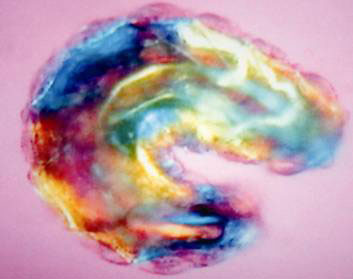
Figure 1. The Rainbow Worm
Living first instars larva of the fruit fly observed non-destructively using an imaging technique discovered in my laboratory. The interference colours, literally the colours of the rainbow, are generated by the liquid crystalline phases of the molecules making up its tissues; seeing it for the first time was indeed a moment of the sublime
What is form? ‘Form’ is a web of interrelationships making a whole, more importantly, apprehended as a whole. A pure form is nothing if not concentrated interrelationship. The intuition of form is the pre-requisite to knowledge; hence it is common to all ways of knowing, in science as in art. For a form to be significant requires something in addition. A significant form is never just the superficial form of any object or work of art as such, nor is it merely a certain abstract formal combination of lines and colours. It is a form that signifies some deep interrelationships in nature, to which the apprehending being is connected. Without this connection, there can be no significance in the content, and hence, no significant form. The significant form is a conduit to the nexus of interrelationships beneath the surface appearance of things. One is suddenly drawn into a catenated flux of associations, propagating and circulating endlessly in a subterranean sea of meaning. For a fleeting yet eternal moment, we lock onto the pulse of some timeless universal being.
Form’ is the irreducible coherence of part and whole. A random collection of bricks is construed as a work of art precisely because in its very formlessness, it challenges each of us, the ‘spectator’ to participate and create a form, if not a significant form. We cannot help but see faces and castles in clouds, monsters in inkblots and exotic shapes in random dots. Form is so central to human perception that, I am told it is extremely difficult to prove something random or formless.
The intuition of form and wholeness is the basis of perception, and all the more so, of artistic perception. It is by no means restricted to visual art. Mozart is reputed to have ‘seen’ a symphony all at once, before he wrote it out in its entirety without a single mistake, much to the dismay of the court composer Salieri [5]. Salieri’s scourge in life was that he clearly recognized in Mozart a genius towering above his own. Music can never literally be seen. Just as our eyes seek out and create spatial patterns, our ears assemble and weave parallel strings of sounds into temporal patterns that make a symphony. A significant temporal form emerges from an intimate communion between the artist and nature.
Music conjures a wealth of rhythmic patterns that are the fabric of natural processes. Day alternates with night as the moon waxes and wanes and the seasons follow one after the other in regular succession. The heavens are thick with the tangled paths of stars and galaxies encircling one another in an intricate cosmic dance. Our bodies, similarly, are replete with rhythms, from the infinitesimal vibrations of molecules to the thump-thumping of the beating heart, all pulsating in complex harmonies to the music of the earth and heavenly spheres [6] (see Quantum Jazz, SiS 32).
Rhythmic elements are very prominent in the ‘decorative art’ of all indigenous cultures, which include textiles, rugs, pottery, basket-work, body-painting and motifs applied to habitations, clothing, shields, weapons, utensils, jewellery and practically every article of use. An embroidery from the Koryaks of Eastern Siberia looks at first glance, remarkably like a musical score for an ensemble of ten or more [7] (Fig. 2). None of the repeated patterns in ‘decorative art’ realistically represent anything in nature, however. The artists have created a pattern, a significant form, capturing what they intuitively feel and perceive, and communicable through a certain indefinable, universal syntax of form.
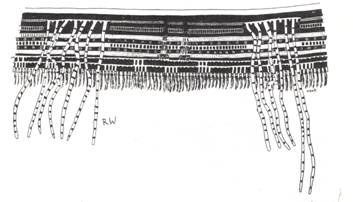
Figure 2. Embroidery from Koryaks of Eastern Siberia
Is that not so for science and scientist?
Mephistopheles in the great German polymath Johann Wolfgang von Goethe’s epic poem, Faust, scoffs at the scholars who try to understand a living organism by the detailed description of its parts [8],
Dann hat er die Theile in seiner Hand
Fehlt leider! nur das gestige Band.”
(Then he has all the parts within his hand
Except sadly, the living bond.)
Goethe might well have been describing the project carried out to its logical extreme by molecular biologists of the present day. Goethe himself, both poet and scientist, knew more than anyone else that the artist who recognizes wholes makes a better scientist than the analyst who breaks up the whole into parts. He said [9]:
In all ages even among scientific men, there can be discerned the urge to apprehend the living form as such, to grasp the connections of their external visible parts; to take them as intimations of inner activity, and so to master, to some degree, the whole in an intuition.”
The intuition of form, or wholeness, is the pre-requisite to knowing, in science as in art. The British mathematician/philosopher Alfred North Whitehead [10] called the primitive act of an organism ‘getting hold’ of the world “prehensive unification”. One must realize that Whitehead’s organism refers to any and every entity in nature, from an elementary particle to what we would call organisms, and all the way up to much larger things such as the earth itself, or a galaxy. The word ‘prehensive’ is used deliberately, to include the non-cognitive perception of organisms other than human beings, or perhaps also the intuitive perception of human beings.
Is there evidence that organisms other than human beings perceive patterns and forms? There certainly is. Bees appear to have the ability to create a map of their surroundings and to communicate it as such. Austrian ethologist Karl von Frisch had discovered in the late 1940s that when a bee scout finds a source of food, she returns to the hive and performs an elaborate dance to tell her hive-mates where the food is located [11]. Actually, a song generated by the beating of her wings accompanies the dance, and both song and dance are necessary to convey the precise information. This is an astonishing feat; not only does the bee have a map of its world as a whole, it can transcribe this map into the significant form of a dance and communicate that to its hive mates.
Mathematician Barbara Shipman at the University of Texas Arlington in the United States was introduced to the bees’ dance as a child, and while doing her Ph. D. in the 1990s, discovered that the bees dance could be modelled as transformations in a six-dimensional space called a ‘flag manifold’ [12] that quantum physicists use to describe the behaviour of quarks. The bees seem to have discovered flag algebra long before humans did; or else, as suggested by Shipman, they are directly sensitive to the quantum field of quarks. Bees and clever human beings, it seems, have a common grammar of form and transformation, for whatever underlying reason. Could it be that this grammar of form and transformation is universal?
Ants live in huge colonies and super-colonies with cities, gardens, and many technologies. Biologists have found that they, too, can tell each other complicated stories with something pretty close to a language [13]. An ant scout was made to go through a maze to find food. On returning to the nest, it huddled together for a while with a group of workers, touching antennae and mouthparts. The scout was then removed from the nest. The workers subsequently found their way to the food through the maze in a much shorter time than when the scout was removed before it had the chance to confer with them. So ants also have the ability to perceive patterns, make maps of their environment, and communicate them in some form of language. These amazing capabilities depend, as Whitehead rightly said, on perceiving wholes in the most primitive act of “prehensive unification”.
Prehensive unification is an integral experience of a here-and-now. We are compelled to recognize the organism as an autonomous conscious being at the point of prehensive unification, ‘enfolding’ information from its environment (such as a map of the whereabouts of food) and ‘unfolding’ it to another space-time (the hive with its mates). The here-and-now in the act of prehensive unification always refers to other spaces and other times, entangling other, deeper, more extensive levels of reality; and that is where the significance of the occasion begins.
Whitehead’s organic vision is one of universal wholeness, in which everything is entangled with everything else through individual acts of prehensive unification (see [14] The Rainbow and the Worm). The paradoxical conclusion to centuries of mechanical reductionism in Western science is to rediscover the organic reality that we are all entangled with and within nature, from the infinitesimal quantum of light to stars and galaxies. This natural entangled state is the only possible ground for the creation and apprehension of significant form and hence of authentic knowledge.
Significant form is deep and dynamic. It is not to be found in the surface appearance of things, but in their reference to realms of reality not immediately before us. A beautiful woman is not a significant form as such, but becomes so in the English poet Lord Byron’s immortal lines:
She walks in beauty like the night
Of cloudless climes and starry skies;
And all that’s best of dark and bright
Meet in her aspect and her eyes:
The significance lies neither in the form of the woman nor in the night, but in the dynamic transference of sympathetic resonance between the two: the clear starlit night and her dark, shimmering, mysterious beauty, each reflecting and heightening the qualities of the other in our mind, intensifying their simultaneous presence.
In just the same way, a significant form in science is as deep as it is dynamic. The search for natural order in 17th century Europe [15] is nothing if not a quest for a deep, significant form. In biology, this began as the idea of ‘the unity of type’ among organisms superficially different, yet sharing a common structure or ‘body plan’. Not only is the organism perceived as a whole, a form in itself, but as a community of forms united by dynamic transformation.
The science of biological form, or morphology, is not about the study of Gestalt, or fixed form. A Gestalt is but an instantaneous snapshot of the organic process of transformation and development. Form, to Goethe, is “the intimation of inner process”, that displays itself fully only in the transformations of becoming. In a community of organisms, this dynamic form captures the convergence of resonance, affinities and sympathies, and at the same time, the creative divergence of individualities, multiplicities and diversities, rather like the endless variations on a theme. In Goethe’s view, living things in their totality strive to manifest an idea. They are nature’s works of art, and so incidentally, they require an artist to understand and a poet to interpret them.
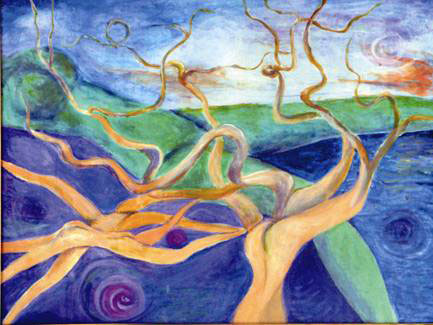
Figure 3. Spirit of the valley by Mae-Wan Ho
The significance of a form lies in its ability always to transport us away from the here-and-now in a wide sweep of the imagination that returns only to be led away again and again. The moment expands and grows with each cycle around the ever-widening circuit of signification, and so one seems to dwell in the moment forever. It is for this reason that significant forms are often figurative or non-representational. A ‘realistic’ work can inhibit those flights of the imagination by focussing attention ever back onto itself until one is overwhelmed with a sense of oppression.
Stage sets and productions in the theatre are most suggestive when they are spare and simple. One particularly memorable example is British actor/director Giles Havergal’s 1990 production of an adaptation of English novelist Graham Green’s Travels with My Aunt, in which three men, dressed in identical brown suits, take turns playing aunt and nephew as well as all the other characters, including a dog. This so effectively underlines the irony and pathos in the humour that one begins to thoroughly identify with the everyman bank clerk, who, in the drab-brown dullness of his uneventful humdrum existence, nevertheless harbours a romantic fantasy of bohemian life in the retold (perhaps imagined) adventures of his anarchic, eccentric aunt. In a more ‘realistic’ production, one’s imagination cannot participate to the same degree, and hence partake of the significance of the occasion.
A significant form always invites participation, as it used to be in 17th century English poet and playwright William Shakespeare’s days, when theatre was not a spectacle - the stage sets being always minimal. Members of the audience were not spectators, but active participants in a timeless drama of the imagination. As Shakespeare said in the prologue to Henry V:
Think, when we talk of horse,
that you see them
Printing their proud hoofs
I’ the receiving earth.
For 'tis your thoughts that
now must deck our kings,
Carry them here and there,
jumping o’er times;
Turning the accomplishments
of many years
Into an hour glass.
One can see the parallels in the development of the science of biological form. For Goethe, the unity of the biological world is a manifestation of some deep natural order. The attraction of a seemingly abstract, transcendental primeval form or archetype can be understood in the same way, for it invites our imagination to actively participate. I stress ‘seemingly’ because I shall presently show why this position is in reality, the most concrete.
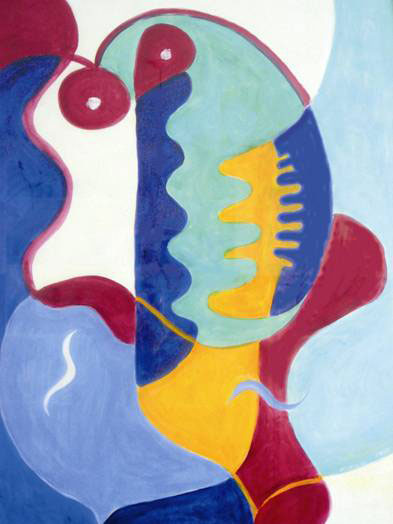
Figure 4. Woman makes man music through the night by Mae-Wan Ho
Darwin and practically all post-Darwinian systematists (those who study classification of living things) regard the unity of type as implying nothing else than the community of descent. The significant form loses significance as its content collapses into one dimension. It comes to signify only one thing: heredity, connection through the bloodline. There is no deep, transformational order encompassing the biological world, in such a way that a multitude of apparently disparate forms can be made simultaneously present to our mind. That is why I often experience an unbearable sense of oppression whenever I come up against a neo-Darwinist who sees biological forms as nothing more than an imperfect record of evolutionary history. Indeed, most neo-Darwinists interested in evolutionary history have given up studying biological forms to concentrate on comparing the DNA of different species instead.
As I have demonstrated elsewhere [16-20], form and transformation are independent of heredity. The dynamics generating form in development naturally gives rise to a transformation set depicting how different forms are related by transformation, and therefore, also providing a natural system for classifying the forms. (Swedish botanist, Carl Linnaeus, the father of taxonomy, was searching for such a natural system. He realized that the system he invented - which biologists have inherited to the present day - was a stopgap, and not the natural system intended [19].)
Figure 5 is a diagram of a transformational ‘tree’ of the range of body patterns in the first instar fruitfly larva [18] obtained by exposing the embryos briefly at different times during early development to an atmosphere saturated with ether. The main sequence, going up the trunk of the tree, is the normal transformational pathway, which progressively divides up the body into domains, ending up with 16 body segments of the normal larva. All the rest with solid outlines are transformations in which the process of dividing up the body has been arrested at different positions in the body. The patterns with dotted outlines are hypothetical forms, not yet observed, connecting actual transformations. This transformational tree reveals how different forms are related to one another. It gives the logic, or grammar of transformation, showing how superficially similar forms are quite far apart on the tree, while forms that look most different are neighbours. Figure 6 depicts the model of successive bifurcation and the embryos arrested at different stages in the main sequence.
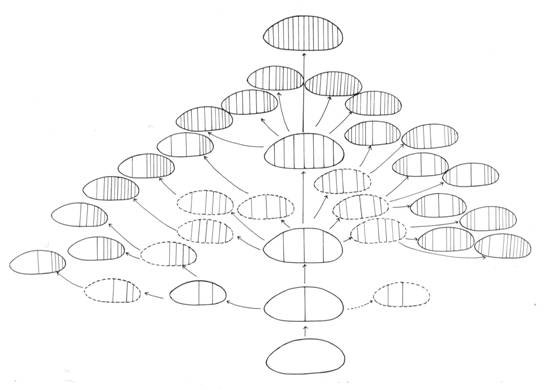
Figure 5. Transformation tree of body patterns in fruit fly larvae
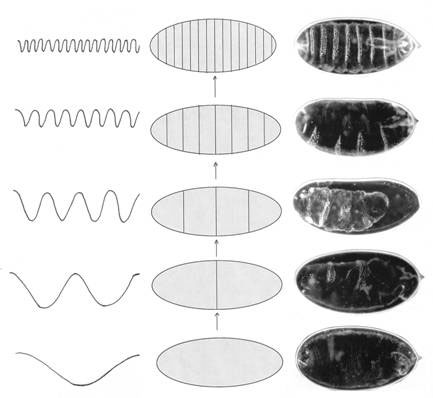
Figure 6. Model of successive bifurcation and actual embryos arrested in the main sequence
A natural system of classification - one that reflects the natural transformational relationships - also results from the tree. The twenty-four actual forms or species are classified hierarchically into one ‘Family’ with two ‘Orders’, the first Order containing three Genera, and the second Order, eight Genera. The forms not yet found (depicted in dotted lines in Fig. 5), would also fit neatly in the natural system of classification should they be discovered in future. There are 676 possible forms according to the rule or grammar of transformation that gives rise to the 16 segments. If all the body segments were free to vary independently, the number of possible forms would have been 216, or more than 60 000.
I have also produced a transformation tree for all possible ways leaves are arranged around the stem in plants [20], based on the dynamics that generate the patterns discovered by French mathematical physicists [21]. The discovery caused quite a stir in France, as leave arrangement, or phyllotaxis, has been a long-standing problem in biology, ever since Alan Turing drew attention to it. Many neo-Darwinian ‘just-so stories’ have been invented over the years to account for different leave arrangements in terms of ‘selective advantage’; all of which have been proven irrelevant in one stroke. The power of dynamics - the syntax of form - is that it predicts the set of possible transformations, excluding all others. It also tells us how the possible forms are related by transformation. These transformational trees are scientific documents, but they are also works of art giving access to the natural process - the tao or natural grammar - that connects apparently disparate forms.
In the indigenous Taoist tradition of Chinese art and poetry, great effort is devoted to cultivating spontaneity. Spontaneity has the quality of free flow, of being both innocent, the Chinese for which is tiãn zhēn, heaven-true, and natural, the Chinese for which are both tiãn rán, heaven-being, and zi rán, self-being, with the connotation of being at ease with heaven and with oneself. It is, of course, also a state of freedom: zi yóu, self-sourced.
It is significant that ‘self’, zi, in Chinese does not mean the isolated individual, rather it has the sense of a being located by its specific relationships to the cosmos. The self, as it were, is held and supported by a myriad of specific entanglements. Thus, whereas the predominant trend in Western culture has been to sever the connections between self and nature, and to fragment the self into a pure (‘objective’) intellect divorced from all bodily feelings, indigenous Chinese culture, as indeed, indigenous cultures all over the world, simply regard the unity of nature and the integrity of self as a matter of immediate experience that needs no special pleading. Consequently, any person, or ‘self’ is empowered to participate in nature’s process.
Furthermore, acting spontaneously and freely is also acting in accordance with the cosmos. This may be compared to the quantum coherent state that maximizes both local freedom and global cohesion [14]. In order to attain true spontaneity, therefore, it is necessary to cultivate a heightened awareness of one’s entanglement with the whole.
Traditional Chinese artists spend a long time meditating and attending to the object, which may be a landscape, or flowers, or some other living beings (it is also highly significant that there is no category of ‘still life’ or ‘nature morte’ in Chinese painting, for everything is alive), and will pick up the brush only when the moment is ripe: when the will of all nature, centred at that moment on the artist, becomes concentrated in one unbroken gesture. The work of art is a unity, formed ‘in one breath’ in a single duration enfolding a multitude of durations, when artist and nature are mutually transparent.
The same sense of participation in the significance of the occasion is responsible for the extraordinary power of so-called primitive art to move us. In Palaeolithic cave paintings and petroglyphs, neolithic Chinese jade sculptures, and African masks, we perceive the archetype of a multitude of significant forms and transformations rooted in the cultural histories of peoples living fully within nature. Their works of art are hymns to the creativity of nature herself.
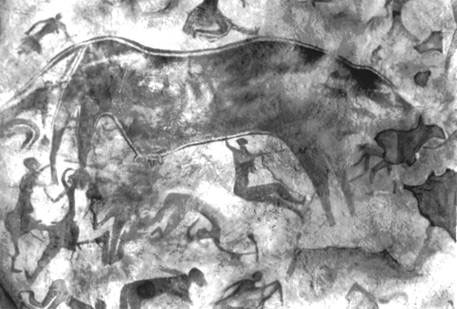
Figure 7. Palaeolithic rock painting courtesy of Prague Museum
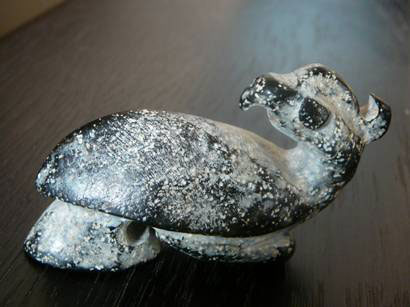
Figure 8. Neolithic Chinese jade phoenix
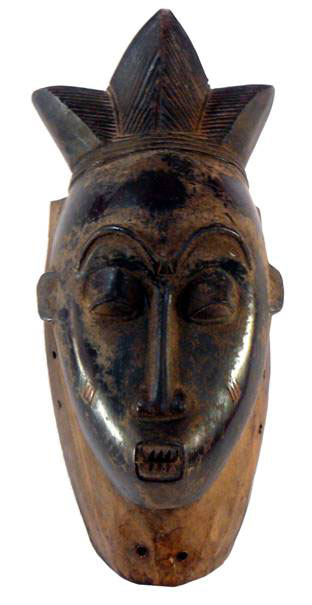
Figure 9. Mask, Ivory coast
Participating in the significance of the occasion is a concrete act, both for the artist and the amateur. The most significant form is hence also the most concrete because it signifies ultimately all of nature, all of reality by the dynamic transference of signification. This recalls what British philosopher and poet Owen Barfield said of language [22]. In the beginning, the meanings of words were concrete, because they were the sign to things and the invisible, inextricable links between them. Later on, meaning became abstract and subject to definitions, denuded of all associations and feelings. So language suffers a loss of significance. Words become mere conventional symbols, representing things and ideas we no longer feel.
I touched the sublime the first time I heard French mathematician René Thom’s lecture on catastrophe theory and morphogenesis (form generation) [23] more than 30 years ago. Here was a theory that concretely signified to me all forms in nature, offering a tantalising glimpse of the universal generative grammar of form, the tao of nature beyond the archetype whereby the multiplicity of things may converge and diverge, transmute and commute in weird and wonderful ways. Mathematics can indeed be a deep and significant form encapsulating the dynamic transference between forms. It is by no means abstract or Platonic, but can be the most concrete and complete apprehension of nature’s unity.
Article first published 16/06/08
Got something to say about this page? Comment